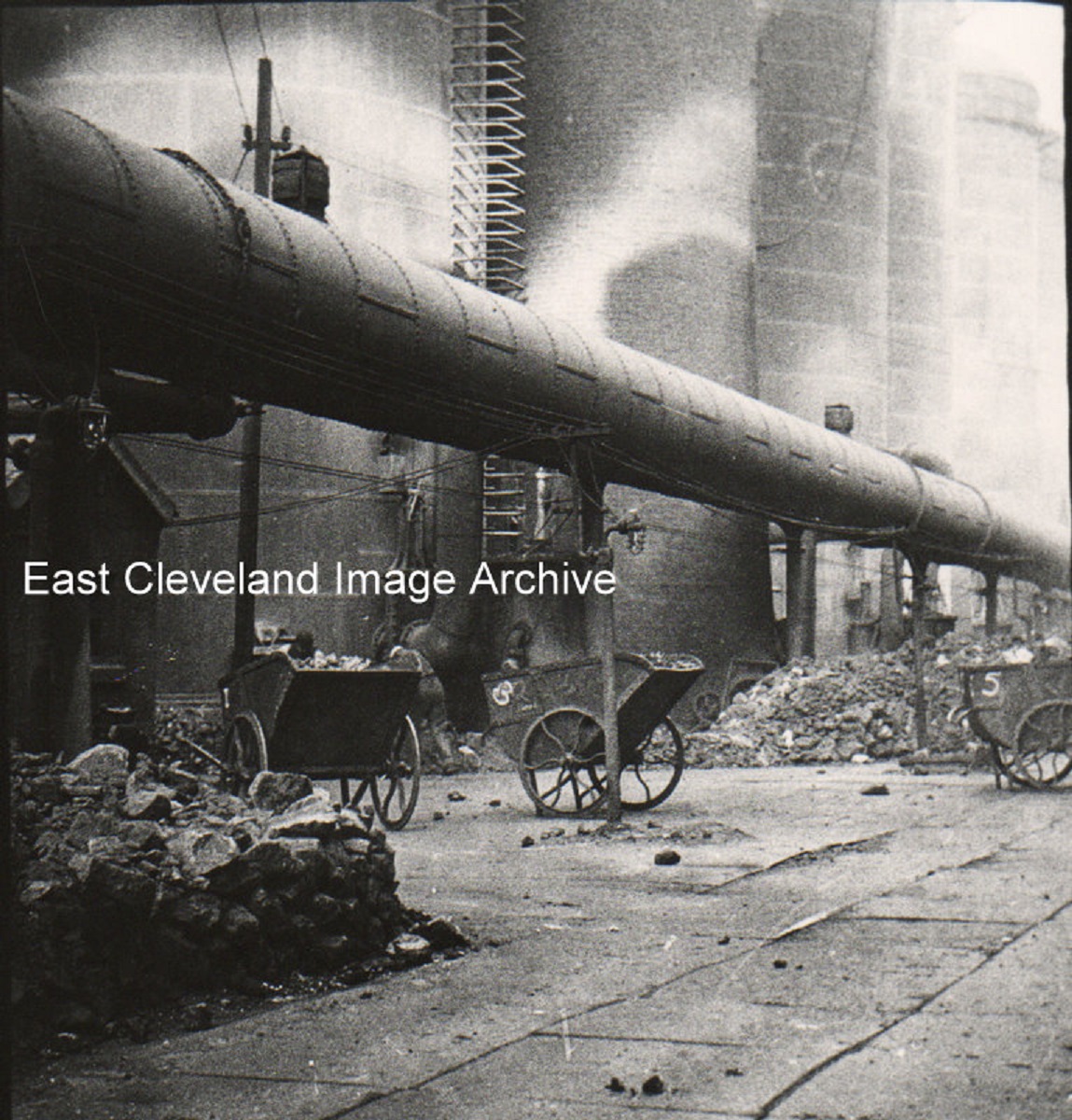
A long time ago on Skinningrove works the ’barrows’ are there some still laden, they must have been very heavy for one man to pull when fully loaded, each barow is numbered and I am supposing each man had his own barrow.
This further image of Mine Barrows in use at Skinningrove works also dates from about 1914, showing barrows already filled with ironstone awaiting hoisting to the furnace tops. Robert Silkstone pointed out the importance of these images: “these tubs are rarely photographed at ground level. They are the tubs that were taken by men who hand charged the blast furnaces before the conveyor system was introduced. The shape of the tub is deleberate to allow charging at the top of the furnace.” Eric Johnson explained their use at Skinningrove works: “At Skinningrove ironworks the term ”mine” refers to the ironstone carried in the barrows which came from the company’s Loftus mine, this stone was roasted in kilns and the calcined ironstone was taken from the kilns to the weigh machine cabin. Then weighed and the barrows hoisted to the furnace top, emptied and returned. Coke and limestone were also carried in the barrows, but they were always known as ”mine barrows”. Steven Partlett was able to confirm this analysis with: “My father worked these after Loftus mine closed and he moved to the Ironworks. What is not obvious in these images is that the ground where they operated was completely covered in plates which were either Steel or Iron. The barrows had a knife edged wheel, similar to a flanged rail wheel. The combination reduced friction, and made it easier to push the loaded barrows. The area was known in the works as “the plates” because of the feature.” These plated areas can be seen if careful attention is paid to the lower areas of these images.
Image (from a glass plate negative) and information courtesy of Eric Johnson, also thanks to Robert Silkstone and Steve Partlett for the updated information.
Recent Comments